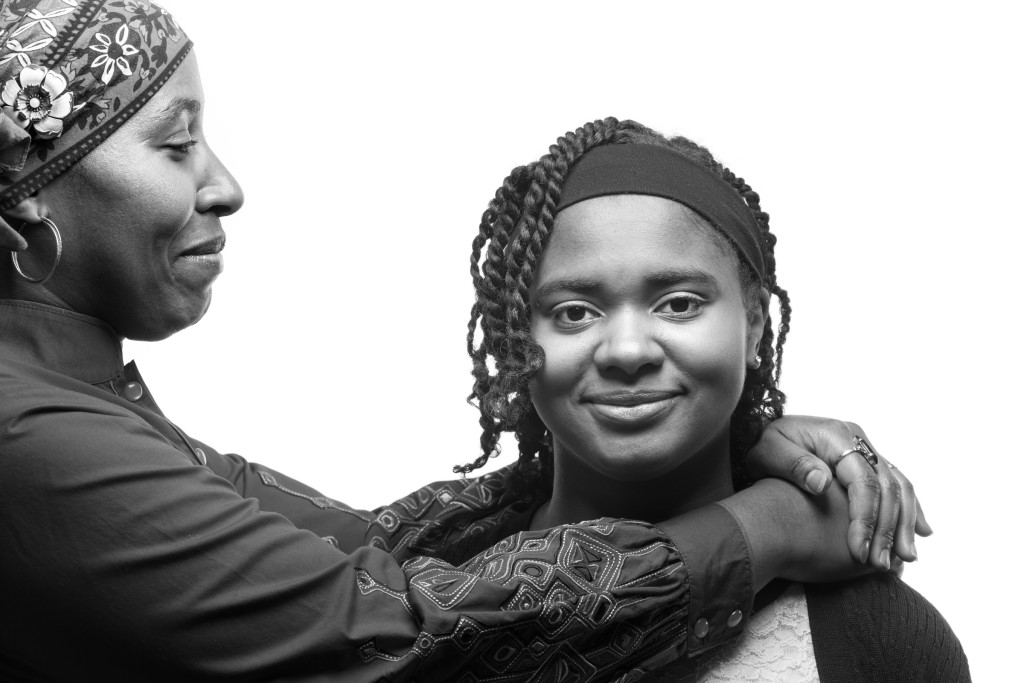Bad ink and quick news bites fuel fear and people end up labeling entire areas of a city as dangerous. An arbitrary boundary is created that people are afraid to cross. Because of that label, people see only streets of crime and closed-up businesses. Every resident is labeled a gang member or lawbreaker. Those are perceptions, not facts. Strip away the labels of economics and zip codes and we find that people are very much the same.

Photo reprinted with permission This image of a mother and daughter is one of 50 portraits taken by photographer Keith Cotton as part of his series on people living in Peoria’s East Bluff. Cotton’s photos capture warmth and emotion, imbuing life and personality into an older neighborhood that is often driven through or driven around.
One of the jobs of artists is to change preconceived ideas, and two local photographers are doing just that. Keith Cotton, Keith CoTTon Photography, created Faces of the East Bluff with 50 captivating portraits of families and folks that disarm us with heartfelt emotions and unpretentious smiles.
Cotton embarked on his portrait series as a mural project for LISC of Greater Peoria. The final mural will be hung on a building on the corner of Wisconsin and Nebraska. Brandon Holmes, Executive Director of LISC in Peoria, said, “You put a face and a story about who really lives in the neighborhood and you start to change perceptions from outsiders. A project like this can serve as an aspiration piece because the residents of the neighborhood feel empowered and embraced.”

Photo reprinted with permission This image is one of 50 portraits in Keith Cotton’s project “Faces of the East Bluff.” Doug and Eileen Leunig write in their column, “One of the jobs of artists is to change preconceived ideas . . . . “
Cotton said, “We’re so visually bombarded with large-scale tasteless advertisements 24/7 that are all hoping to hook our attention. This project sheds light on unknown loving families happily living in ‘scary’ neighborhoods. These humble slices of humanity don’t need to sell themselves to be something they’re not, and that’s the beauty of it.”
Maris Mednis was an ICC photography student at the time he created portraits of people in Taft, Harrison, and Sterling Towers for a book titled “Those People.” Looking at his environmental portraits, you realize the label is given to the people because of where they live not because of who they are.
“I’m involved in some organizations that are working to make better neighborhoods, so I’ve gone to a few city meetings,” Mednis said. “There is usually someone there who says, ‘Well, we don’t want those people being moved closer to us.’ I thought I could try to fight that label of ‘those people’ by doing this project.”
When asked about Mednis’ book, Holmes of LISC said, “For middle income or upper income people, the photos and stories will help them relate to the situations. They might realize, ‘My great aunt had breast cancer and if it hadn’t been for family helping her out, she would have been living in public housing.’ These projects start to make connections between people. The photos show what’s really going on.”
The arts speak to our hearts. Many things can change the way we think about the world around us, but few of them allow us to see through the eyes of another. It does not take a thousand words to describe the feeling of a mother for her daughter. Just one split second captured by the hand of an artist can produce a story that is both timeless and universal. Displaying that story can change the way we look at each other. It can change the way we look at our city. It can even change the way we see ourselves.


Recent Comments